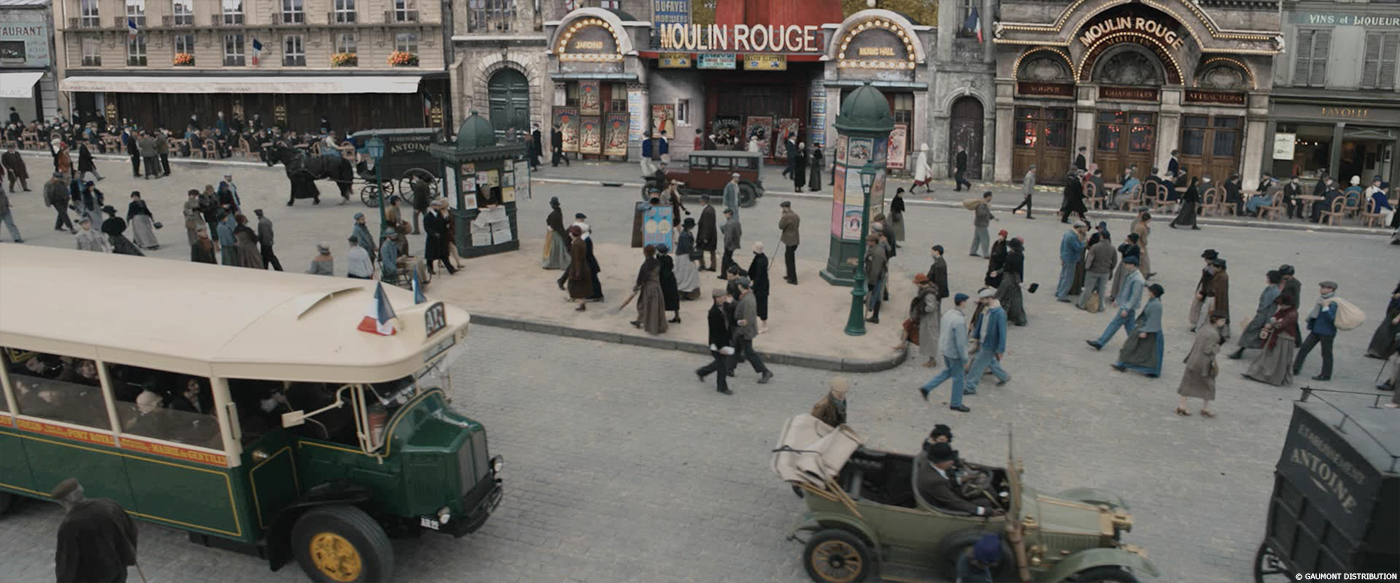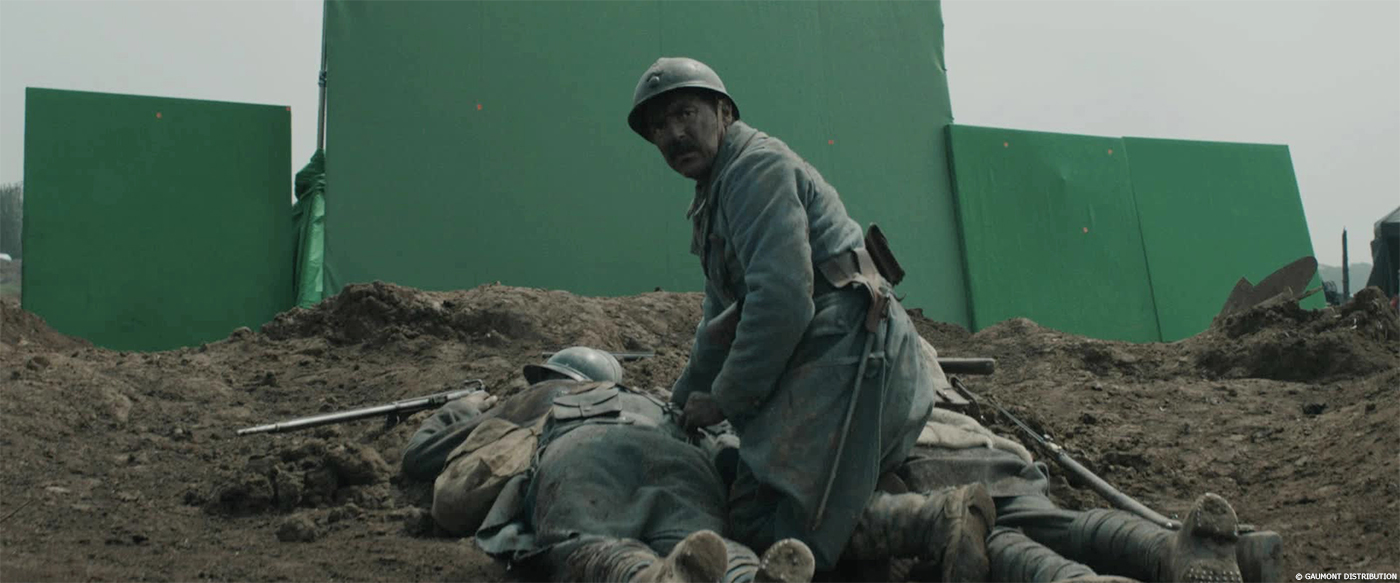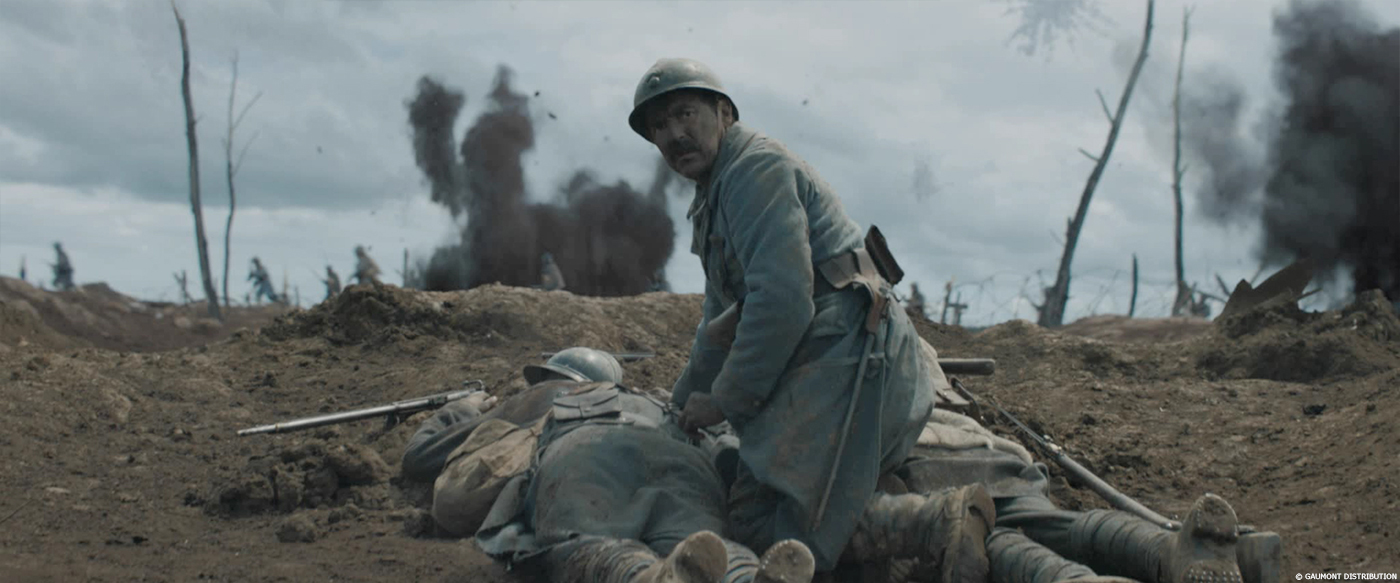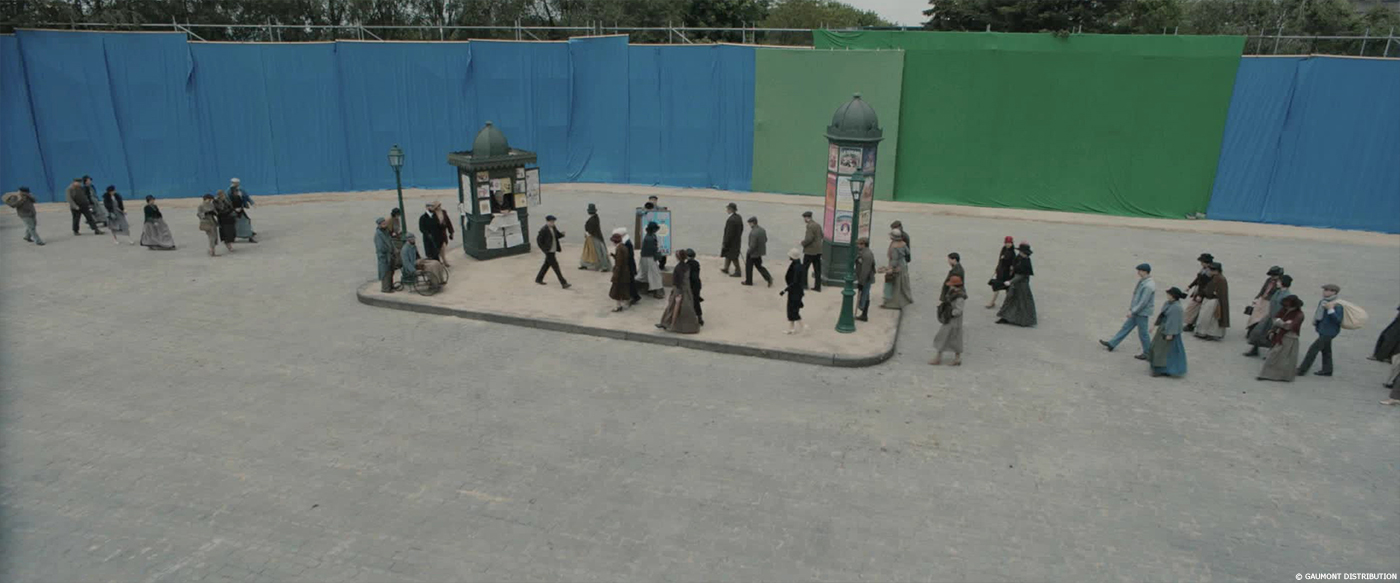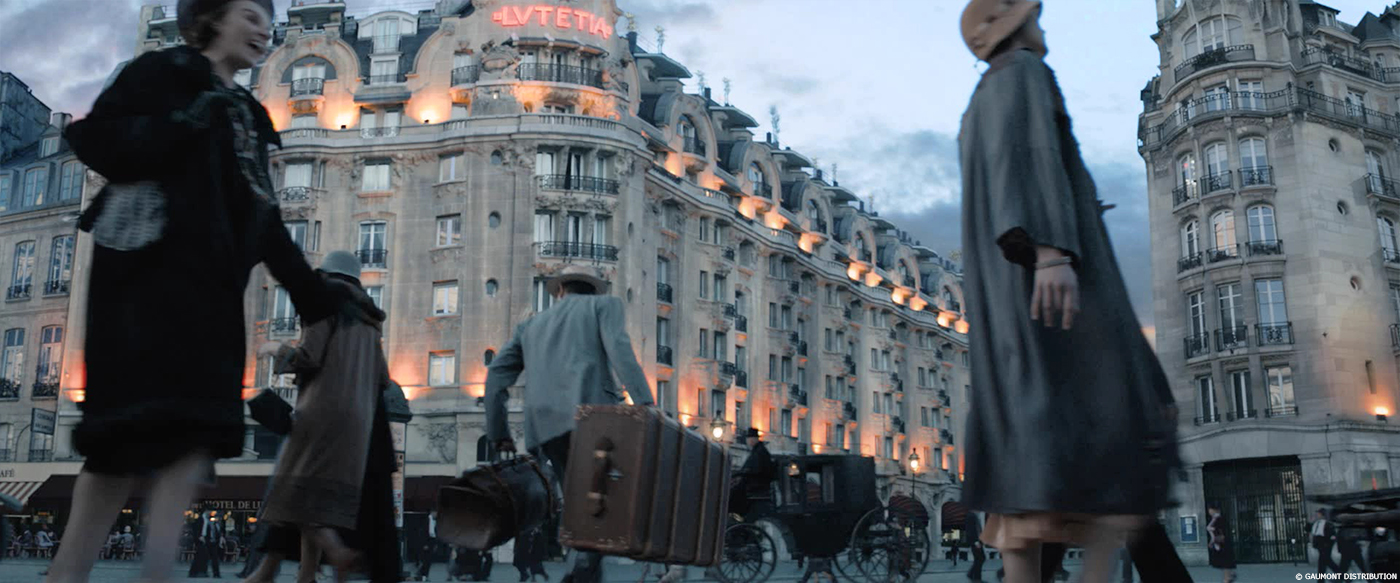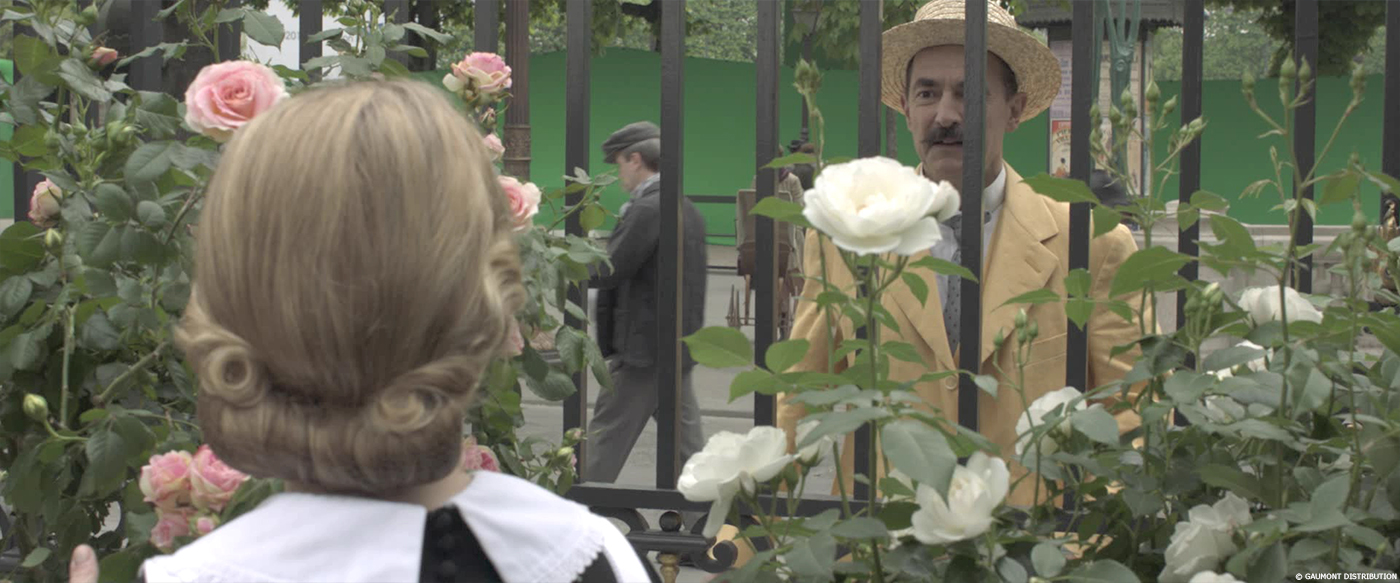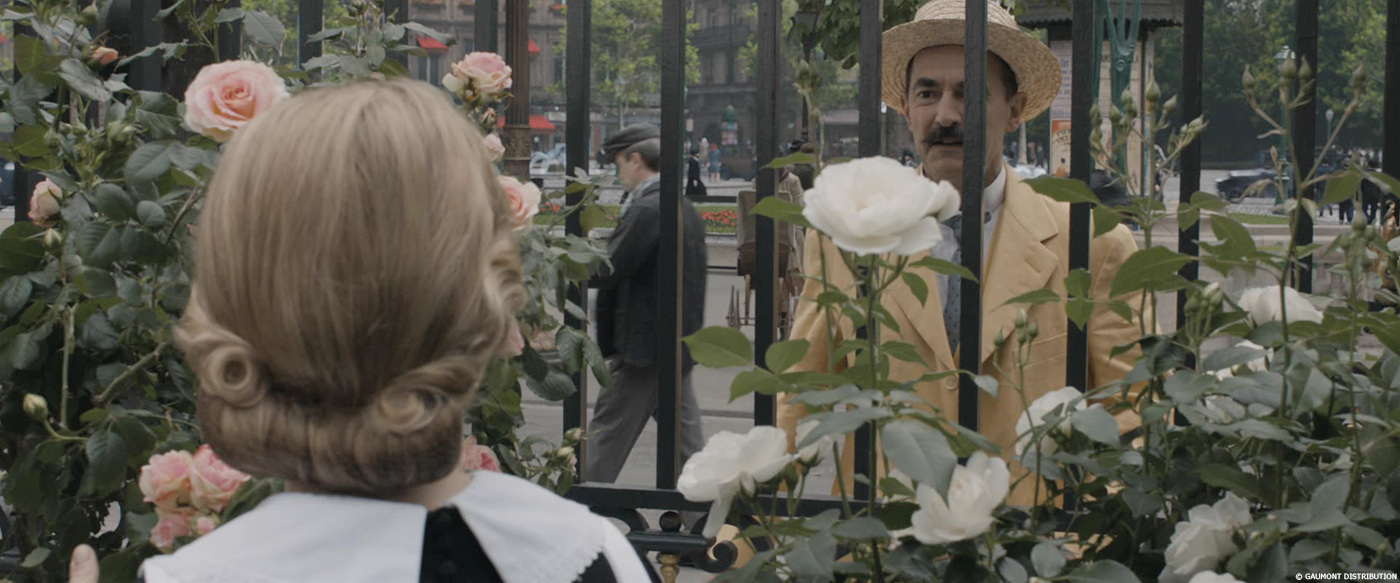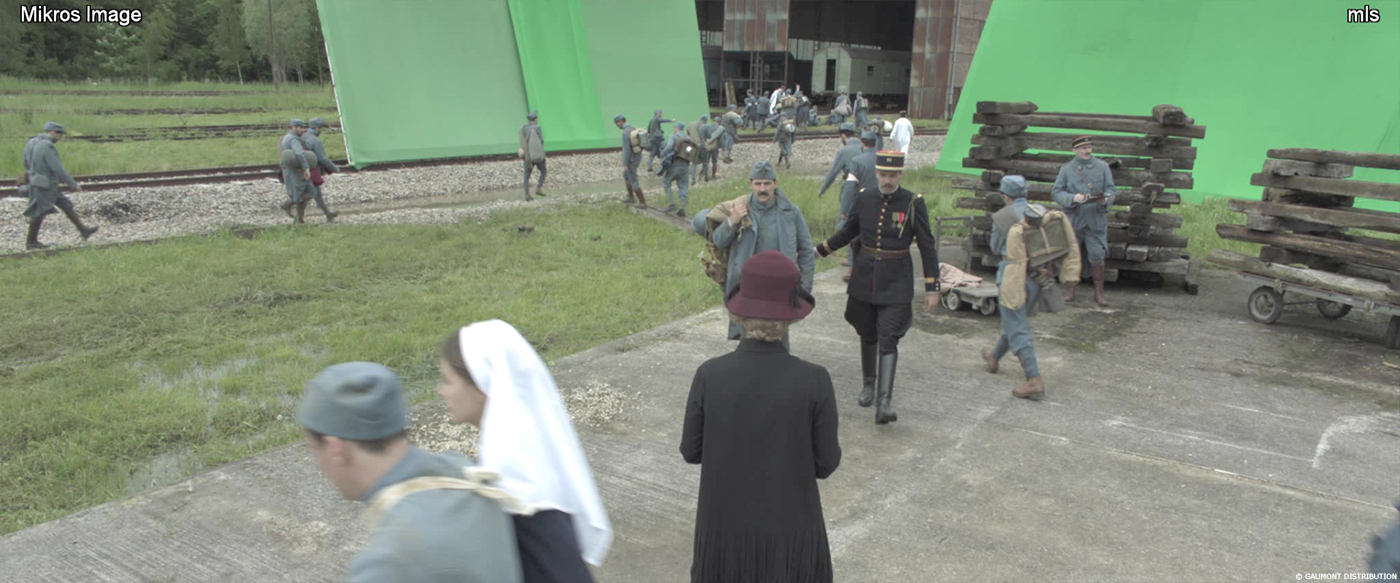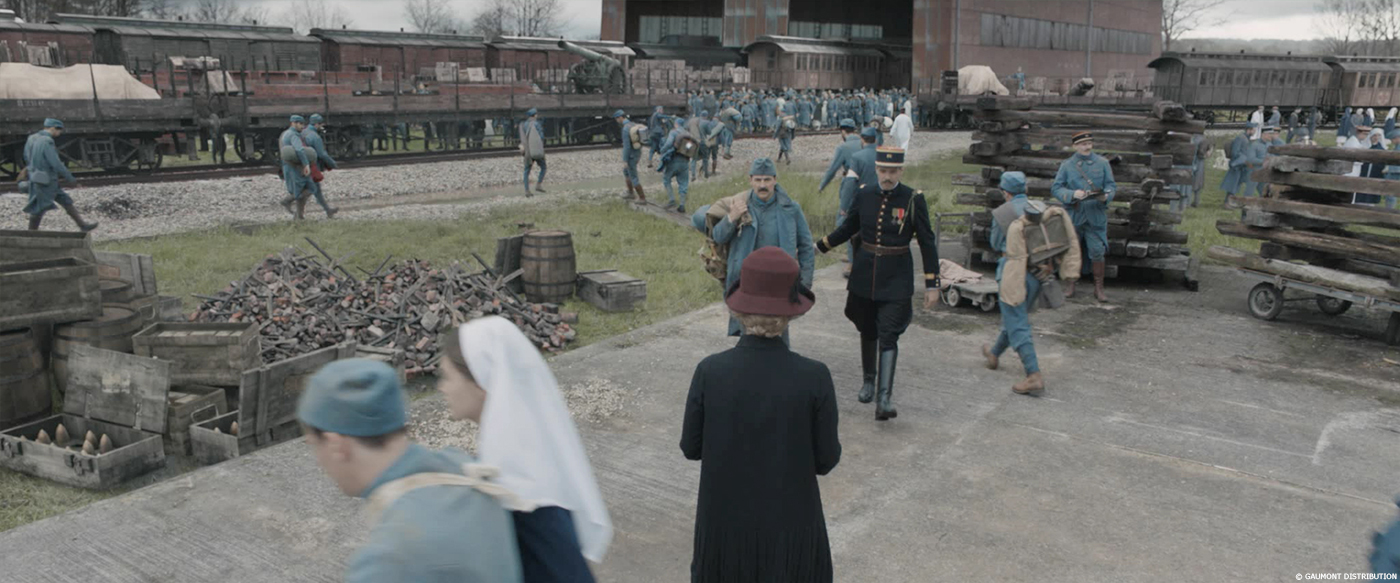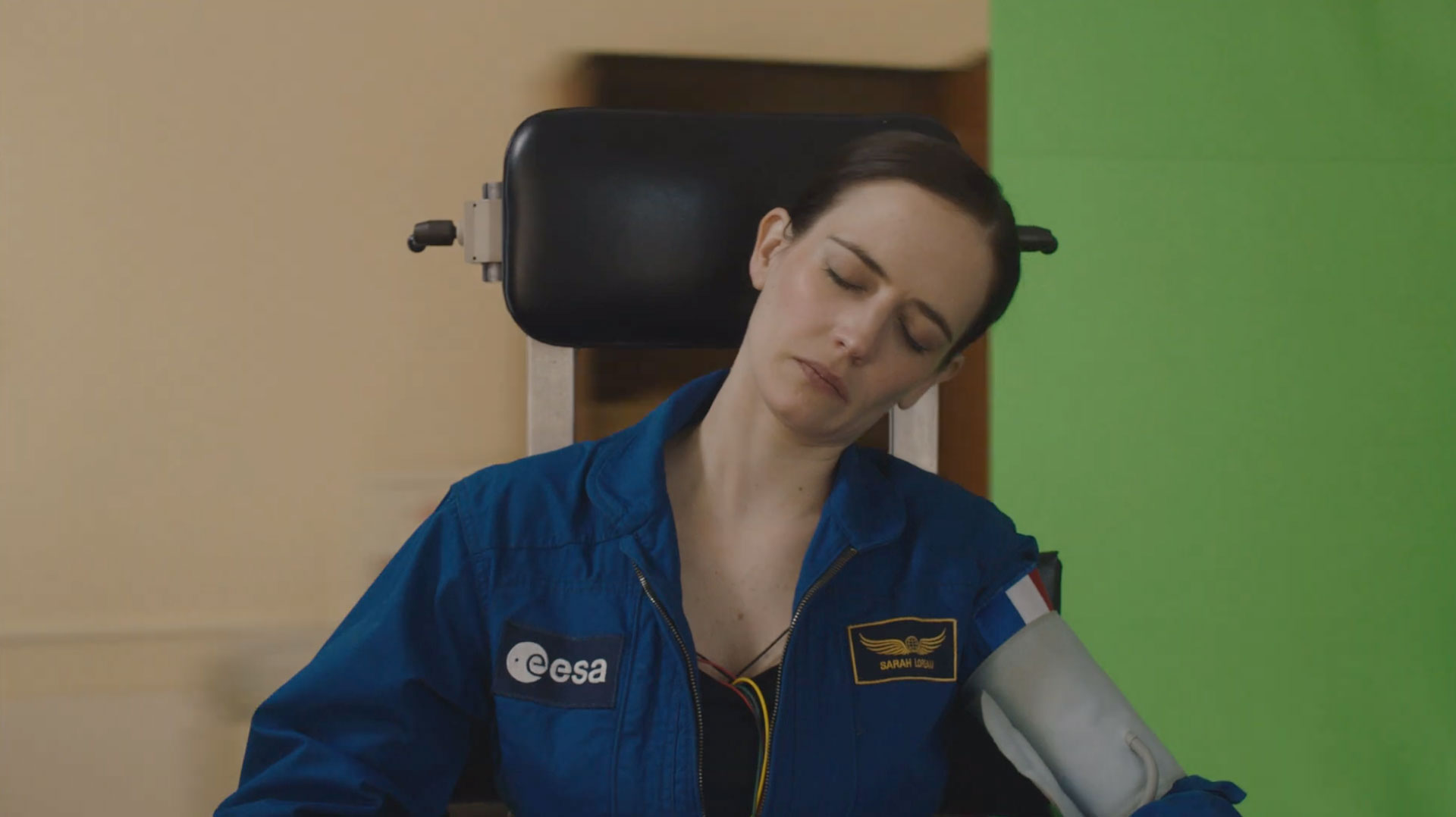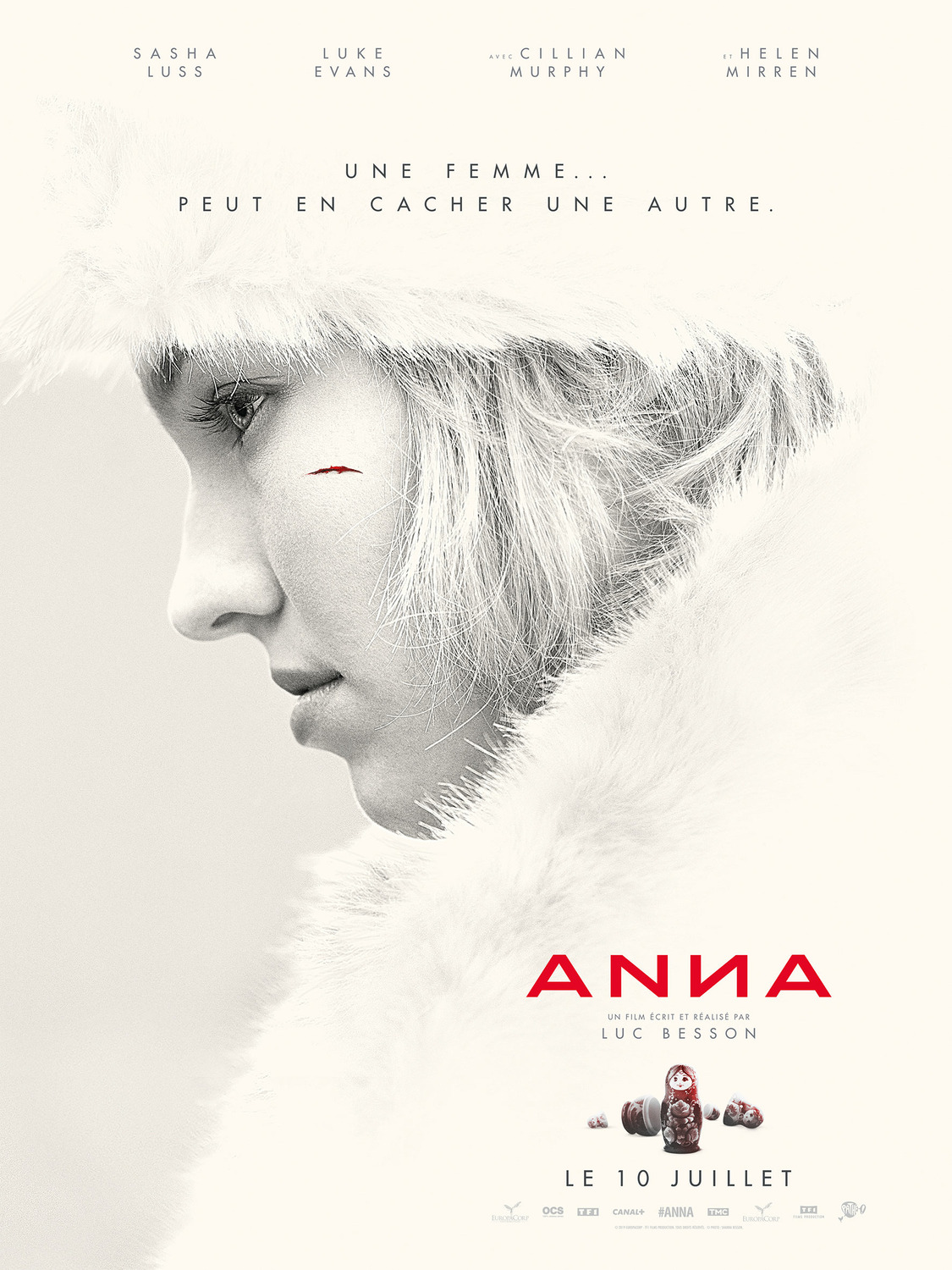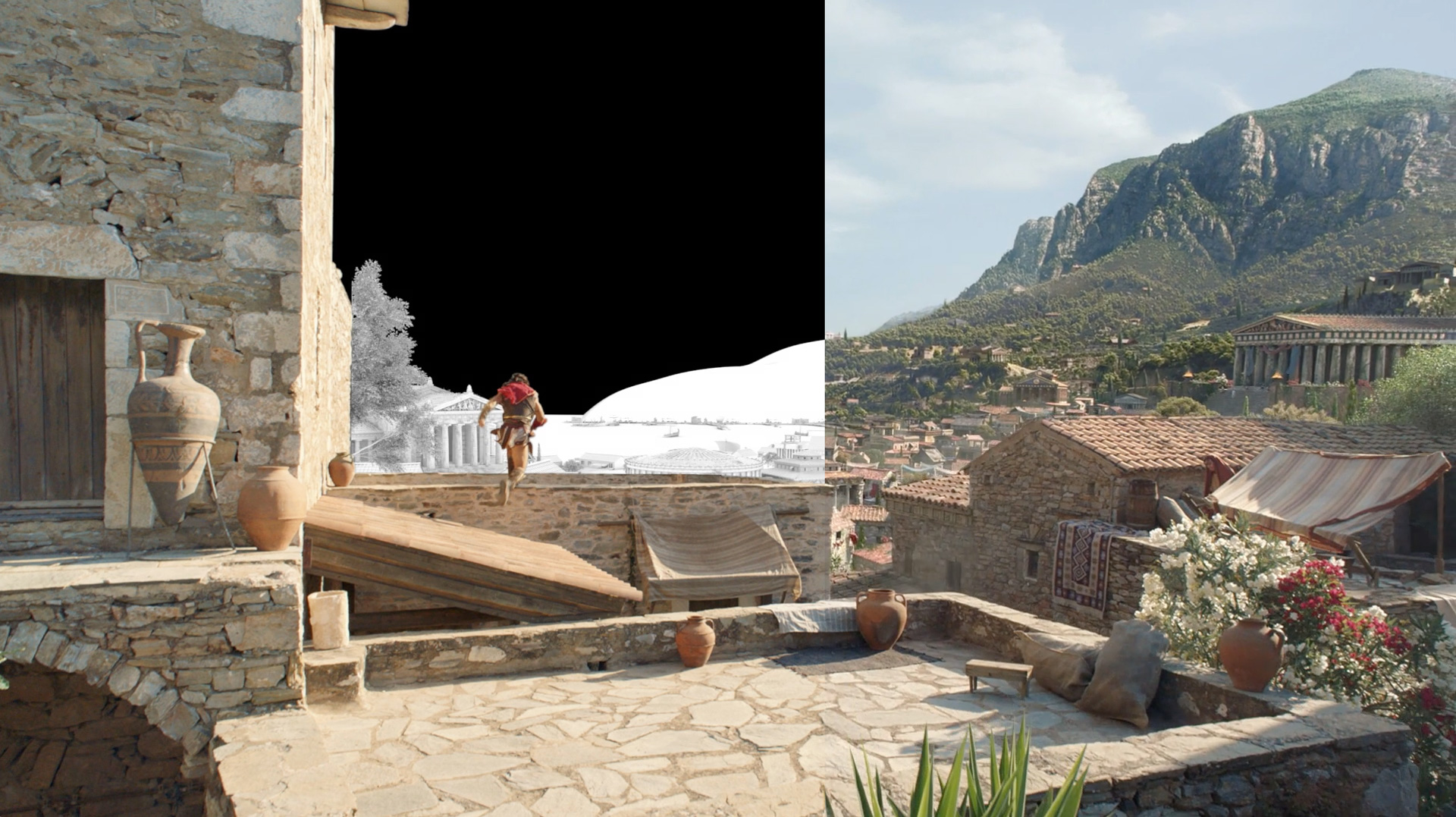In 2013, Cedric Fayolle explained to us in detail about the work of Mikros Image on 9 MONTH STRETCH. He then worked on many projects such as DHEEPAN. Today, he talks to us about his work on the new film by director Albert Dupontel.
How was this new collaboration with director Albert Dupontel?
This is my 4th collaboration with Albert Dupontel after LOCKED OUT (aka ENFERMÉ DEHORS) (2006), THE VILLAIN (aka LE VILAIN) (2009) and 9 MONTH STRETCH (aka 9 MOIS FERME) (2013). For SEE YOU UP THERE, he contacted me even before writing the first lines. He asked me to read Pierre Lemaitre’s book in order to know if it was possible to make Paris in 1919 as well as the broken mouth, and the famous WW1 battle scene. So I provided a 20-page document based on the book, a kind of state of the art about what was possible in VFX.
What was his approach and expectations about the visual effects?
Albert Dupontel is passionate about technique, so we could work very closely, he understands very quickly the constraints and especially the possibilities. It was nice to think together about the VFX solutions. It often happened that only he and I understood where we wanted to go… he explained to the team the final result, it’s extremely comfortable.
You were also Second Unit director. Can you tell us more about it?
It was a true honor that Albert Dupontel and his producer Catherine Bozorgan entrusted me with this mission. Initially, it was for the VFX shots (which are numerous in the film). He offered to take on the project because I knew exactly what I needed. So I supervised these shots by taking care of the framing, the movements… under the control of Albert of course at the beginning, and little by little he took the opportunity to filmed the shots with the cast while I filmed the VFX shots… it saved time… Then trust settled in, and we saw that we could increase the number of shots filmed during the day. So I was in charge of the inserts, some establishing shots, it was very enjoyable.
How does that help you with the VFX work?
When we supervise we manage the set for technical reasons, we are the referent. The official position of the 2nd unit team director allows even more legitimacy on a set to ask for changes of light, frame, to propose more ambitious things…
How did you organize the work at Mikros Image?
We had 2 teams, one in Montreal and one in France. My job was to coordinate the teams, assisted by Manon Lebas (VFX producer) to optimize the work and its speed of execution. In France we mainly used the work of compositing with high skilled artists. In Montreal, we managed the CG, the crowd, and the environments. We had a team of comp artist who were assembling all that, and they were all very flexible and intelligent to handle of the different challenges we encountered.
There is a beautiful continuous shot over the trenches following a dog. Can you explain in details about it?
This is part of the shots I made in 2nd unit team. The shot of the opening credits was quite an adventure. This dog crossing the battlefield to end up bringing the impending armistice missive into his master’s hands was of rare complexity. Filmed in 2 parts, the first with a drone until the entrance to the trench and then a trick allows you to switch to the other camera and follow the dog in the trenches as in a sequence shot. All this was storyboarded by Albert Dupontel.
This drone part required a lot of work upstream for the dogs trainers. During the filming it was necessary to synchronize the race of the dog, the movement of camera to discover also the fields of battle and especially to finish at a very precise point above the sheet metal with the dog which passes underneath. All the trials had been unsuccessful the days before. We even thought of changing our minds. But on the day of the shooting, the third shot was perfect… We could not believe it and I went to get Albert who was shooting with the cast just beside, in the trench, to announce him with a smile « I think we have the shot! ».
The movie is full of great long movements. Can you tell us more about these shots?
The camera movements are always important things in Albert Dupontel’s cinema. They enlarge the subject. All this is decided by him very quickly. We receive a technical breakdown of all the shots of the film with the indications going even up to the mark of the crane. Making these continuous shots is always an interesting challenge especially when today we can « cheat » unlike the real continuous shots of Orson Welles in TOUCH OF EVIL or those of Robert Altman in THE PLAYER for example. So we enjoy finding impossible movements but that remain realistic.
How did you improve these shots?
For example the first shot of Paris that lasts 2 minutes. We start from a wide view of Paris, we go down a street, we follow the young Louise who enters an inner courtyard, she climbs the outside stairs that lead to the slums of the main characters, she knocks on the door, Albert opens and we return with him to their home where we find Edouard lying on a bench.
For this shot, we filmed in 3 different locations with a one month interval. Into a street that we customized as a Paris period, we follow the girl, we go under the porch, we take the opportunity to make a digital connection through a CG portal, we find it in the courtyard where we follows her with a steadycam (we add Paris above the walls). As she climbs the stairs we connect digitally with a crane plane that brings us close to a door. This door, we find it in the studio where we built the interior set… and the movement continues with the steadycam to Edouard. 4 shots for this continuous shot. There are about ten of them in the film.
The war in the trenches is really intense. How did you work with the SFX and stunt teams?
It’s really what I like most about my job, it’s when you have to work with all the different departments. In this battle scene there are a lot of real explosions, it was really impressive to work under these explosions. The VFX work is only there to enhance what we have in the foreground. So we added the same explosions in the background, extended the No man’s land, added explosions in the sky (shrapnels)… add soldiers in the background. But what gives the true feeling of the action is that the actors were really in the middle of the explosions… we must also emphasize the work of the sound that is crazy.
Can you tell us more about your work during the war sequence?
Most of my job was to make sure that we could add soldiers and explosions, but what was nice was that I also had a camera to have other views during the big battle. I was in the middle of the explosions, hiding, looking for the actors or other interesting events. I was dressed as a soldier in case the main crew filmed me. By the way, as I was dressed as a soldier, Albert used me as an extra and so I make a little cameo… and that confirms to me that I am more comfortable behind the camera 🙂
The movie then moves to a Paris period. Can you explain in details about the design and creation of Paris?
It is first the work of the Production Designer, the Costume Designer and Albert Dupontel himself. They used all possible photos, paintings… there was the beginnings of the color photography, which is what inspired the particular look of the film. The autochromes of Albert Kahn give a brilliant impression of this period. Then in VFX, we tried to stay the most faithful to the research already done. For the Place Blanche for example, we found postcards of the Moulin Rouge at the time and it was precious.
Did you receive specific indications and references from Albert Dupontel?
Albert Dupontel was extremely well informed about this period. So we had many references and especially many films that spoke about it. These films were analyzed together as WINGS by William A. Wellman, Stanley Kubrick’s PATHS OF GLORY, Raymond Bernard’s WOODEN CROSSES, Lewis Milestone’s ALL QUIET ON THE WESTERN FRONT, and even the excellent documentary APOCALYPSE: WORLD WAR I by Daniel Costelle and Isabelle Clarke… and many others. Some have even inspired some shots.
Can you tell us more about the creation of the Old Moulin Rouge and its environment?
For this sequence we shot on a parking lot on which we had only cobblestones. Then it’s a great combination of multi-pass of many extras. Regarding the set, we built a 3D base of the Mill and the buildings. A simple texture, and then all the patina was made in Matte Painting to bring more a natural aspect. And at the end, we added digital crowd on sidewalks and terraces to get the popular life of this neighborhood.
The heroes are living in a period Lutetia hotel. How did you recreating this building?
Hotel Lutetia still exists but its facade is under renovation. So we started from archive photos and we rebuilt the facade in CG. We shot on the same parking lot as for the Moulin Rouge. The interiors were shot in a mansion, and the rooftop was built in studio with a green screen and then we put back Paris by Night.
Which locations in Paris was the most complicated to recreate?
The most complicated in Paris is without a doubt the Champs-Elysées. The largest and best known of the Parisian avenues. Even if we filmed on the real locations, we didn’t block the Champs-Elysees. We had a big green screen that was at the end of the sidewalk, so we had to rebuild everything. The roads, the fountains, the flower beds, the buildings, the crowd, the trees, the traffic… it was a real headache especially since there are many shots of various light conditions and with two seasons (autumn and summer).
Is there any other invisible effect you want to reveal to us?
There are many. For example, the cemeteries. Only the crosses around the actors were built. Everything else is CG (as well as the extras), there are also the shots of Morocco that are all CG… we shot on a parking lot with only sand, the extras and more stuffs.
Which sequence or shot was the most complicated?
The demobilization sequence. The train station. Everything we see outside is fake. The trains, the extras, the wagons, the sets behind… the most complicated is that there were 5’000 soldiers and trains that move… it was therefore necessary to choreograph everything to stay consistent. As soon as the editing was moving, our simulations were no longer connected… so we spent hours adjusting all that.
What is your favorite shot or sequence?
Hard to choose. There is a shot that I really like, it’s in the infirmary. We wanted to tell how Albert steals morphine. It’s anecdotal but it required 4 or 5 shots to tell the story. Then we copied an idea from Robert Zemeckis in CONTACT by playing with the reflections. Apart from the wink, this allowed to fit the entire sequence into one shot playing with the mirror. This simplifies the narration to its maximum and even accentuates the comic effect without slowing down the story.
What was the main challenge on this show and how did you achieve it?
The most ambitious was the multiplicity of the effects. To reconstruct a battle, recreate Paris in 1919, the broken mouth (even if it is discreet all the shots with his scarf, we removed the chin), the CG crowd, the camera movements… it was like a fireworks of VFX, a demoreel into a single film actually.
What is your best memory on this show?
Personally it was the confidence of Albert Dupontel. In preparation, filming and post-production, we had daily contact. His great understanding of the visual effects and his curiosity push him to go further and have fun to surprise him. A very nice moment is that he came to present his first editing version to my team. And then they were able to ask him questions, it allowed my team to know the project in its entirety very early and thus to propose choices that really went in the right direction.
How long have you worked on this show?
My first research began in April 2014, I then read and analyzed the 13 versions of the script during 2 years. Then there were 3 months of preparation and 14 weeks of shooting in February to June 2016. The post-production started just after it and we finished in April 2017.
What’s the VFX shots count?
There are about 500 shots in the movie.
What was the size of your on-set team?
On the set, I was almost alone, except for the big scenes of crowd or environment where I was accompanied by another supervisor in reinforcement to manage the stills and to have an additional opinion to ensure to bring back the good elements. Hugues Namur and Manu Souillac, 2 experienced supervisors from Mikros Image came to give me a helping hand among others.
Then in post-production we were about sixty.
What is your next project?
I just finished filming THE SISTERS BROTHERS by Jacques Audiard. A western with John C. Reilly, Joachim Phoenix, Jake Gyllenhaal and Riz Ahmed… I supervised the movie with Stephane Thibert as CG Supervisor, we are now tackling post-production… again a beautiful and incredible adventure.
A big thanks for your time.
// WANT TO KNOW MORE?
Mikros Image: Official website of Mikros Image.
© Vincent Frei – The Art of VFX – 2017

